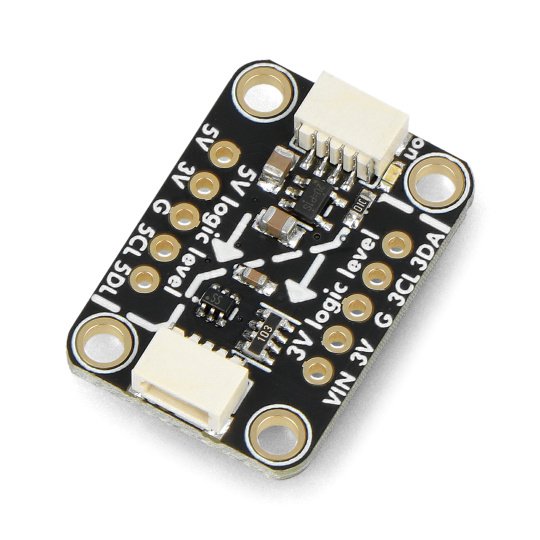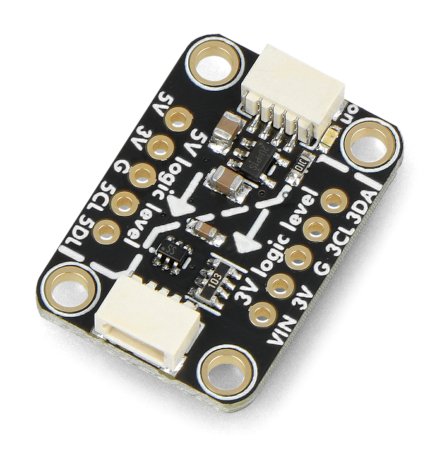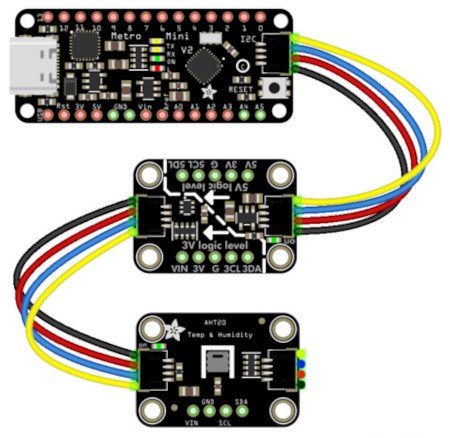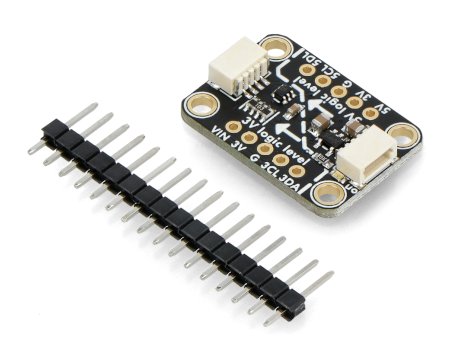Product description: Level Shifter Breakout - voltage level converter 5 V - 3 V - STEMMA QT / Qwiic - Adafruit 5637
The Adafruit Level Shifter Breakout is a voltage level converter that allows you to obtain a 3V output voltage from an input voltage in the range of 3V to 5V . It has a built- in 3.3 V voltage stabilizer with a capacity of up to 500 mA , allows you to connect modules powered by 5 V with sensors with a working voltage of 3.3 V. Level Shifter Breakout has outputs in the form of solder pads, as well as two STEMMA QT / Qwiic connectors , so it can be used with peripheral devices equipped with this connector standard - no soldering required.
Also check the manufacturer 's user guide .
Pinout description and connection diagram
The module has outputs in the form of soldering pads, to which the goldpin connectors included in the set should be soldered. Alternatively, STEMMA QT / Qwiic connectors can also be used, which do not require soldering. The converter should be connected with the selected modules in accordance with the following description of the pins:
- VIN / 5V - 5V input voltage pin
- 3V3 - 3.3 V output voltage pin
- G - mass of the system
- 5CL - I2C clock line of input voltage from 3 V to 5 V
- 5DA - I2C data line of input voltage from 3 V to 5 V
- 3CL - I2C clock line of 3 V output voltage
- 3DA - I2C data line of 3 V output voltage
Module technical specification
- Type: voltage converter
- Input voltage range: 3V to 5V
- Output voltage: 3V
- Voltage stabilizer: 3.3V 500mA
- Status indication: built-in LED
- Connectors: 2x STEMMA QT/Qwiic connector
- Board dimensions: 25.4 x 18 x 4.8 mm
- Weight: 1.8g
Kit contents
- Level Shifter Breakout - voltage level converter 5 V - 3 V - STEMMA QT / Qwiic - 1 piece
- Goldpin strip 1x16 - raster 2.54 mm - 1 piece
STEMMA QT/Qwiic connector
The module is equipped with STEMMA QT / Qwiic connectors , located on both extreme parts of the board. This standard increases prototyping capabilities, significantly speeds up the process of connecting with development boards and a wide range of other sensors. All this is done without the need for soldering and only with the use of a suitable cable.
Useful links |

















































































































































































































































































































































